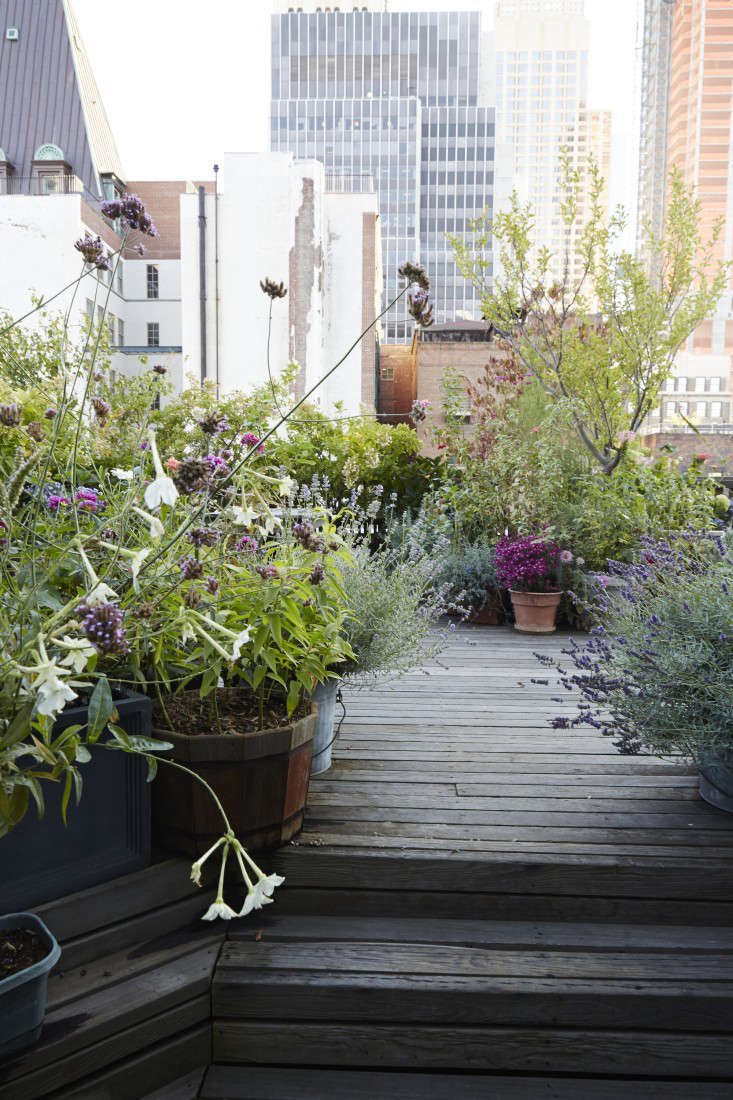Every gardener has a problem. Yours may be a deep pool of shade where nothing blooms. Or a slope that washes away after heavy rain. Or an oak tree with roots that have spread like varicose veins. Mine is deer. Here are ten superhero plants to save our gardens:
These are not the latest hybrids, but rather basic plants useful in temperate climates to both novices (who may find them new) and to experienced gardeners (who may be happy for any distraction from that insatiable chomping sound). Here are some old friends he New Sunset Western Garden Book recommends.
What’s your favorite problem solver plant? Tell us about it in the comment section.
Above: Image via Saipua.
At night, I lie awake and imagine I hear incessant chomping. After they finish off the roses, what will the deer do next–send out for pizza?
“I’m a little obsessed,” I admitted the other day to Kathleen Brenzel, the editor of The New Sunset Western Garden Book, the encyclopedic ninth edition of a guide that gardeners in the western United States have revered since its earliest incarnation as a pamphlet, in 1932.
“If deer are eating everything you own, try something they don’t like,” Brenzel said.
Thwart the deer. It is a truly bizarre thing about deer that they shy from eating magnolias, because the buds on Magnolia x. soulangeana look delicious even to me. A Saucer Magnolia will grow as tall as 25 feet; it’s a lovely tree to anchor a garden; $12 through the Arbor Day Foundation.
Above: Brighten a shady spot. Lady’s Mantle has a nice lobed leaf, forms compact mounds, and sends out stalks of yellow blooms that are “attractive as a frothy mass,” according to Sunset; $6.29 at Broadway Gardens. Pair Alchemilla mollis with Hosta beneath leggy shrubs. Photograph by Chris Waits via Flickr.
Are you gardening in deep shade and in danger of sinking into deep despair? We commiserate: see Steal This Look: Shady Secrets of an Expert Gardener.
Above: Cover a shady corner without spending a fortune. Clumps of Hosta will send up spikes of flowers each summer and spread quickly; split the roots with a sharp spade to double the coverage. Hosta ‘Saint Paul’; $11.99 through Amazon. Image via Sunset.
Above: Anchor a flower bed with a rose that blooms all summer. Other flowers come and go; a shrub like Rosa ‘Molineux’ has a long blooming season and is disease-resistant; $24.95 at David Austin Roses. Photograph by Jim W. via Flickr.
Not sure which rose will thrive in your growing zone? No matter the weather, we have A Rose for All Regions to recommend. See our 5 Favorites for Northeast Rose Gardens, Texas Rose Gardens, and Northern California Rose Gardens.
Above: Avoid costly annuals with a perfumed perennial. Although a mature Heliotropium arborescens may achieve a height of 4 feet, according to Sunset, Heliotrope’s greatest value is as a fragrant bedding plant; $4.90 at Garden Harvest Supply. Image via Wood Elf Gardener.
Above: Block the neighbors. Or create structure amid the chaos. Even if the rest of your garden has clumps of everything you love plopped willy-nilly in the dirt next to each other, a boxwood hedge will lend an instant air of order and propriety. Buxus sempervirens, otherwise known as common boxwood, will achieve heights of up to 20 feet, if you crave privacy; $22.95 for 1-gallon-container plants at Amazon. Image via Sunset.
Above: Stop erosion on a slope. Snowberry will grow happily on a steep hillside and will flower in spring or early summer; $19.99 from ShrubSource. Image via Old Blue Crow.
Above: Consider a groundcover that won’t gobble up space. Such cranesbills as Geraniaceae ‘Johnson’s Blue,’ will spread via rhizomes through the garden, but always politely; $7 at Geraniaceae.com. You need not fear they will choke everything in their path. Image via Sunset.
Above: Cover a bare spot under a tree. Periwinkle will thrive where lesser groundcovers fail. Don’t waste it on a sunny spot; turn it loose in shade under that old oak in the corner of the backyard. As a groundcover, Vinca Minor is typically sold in bulk; 50 plants for $24.95 at Greenwood Nursery. Image via Sunset.
Above: Withstand wind. Privet doesn’t get enough credit. Although often dismissed as a common hedge shrub, it also deserves credit for its ability to protect more tender garden plants from being damaged by high winds. Waxleaf Privet in a 5-gallon container; $44.98 at Amazon. Image by Mary Richmond via Flickr.
Above: The ninth edition of Sunset’s guide, The New Sunset Western Garden Book is the first to feature color photos of thousands of plants; $23.07 at Amazon.
Are your roses under siege? See Take That, Aphids.
This is an update of a post originally published March 28, 2012.
























Have a Question or Comment About This Post?
Join the conversation (7)